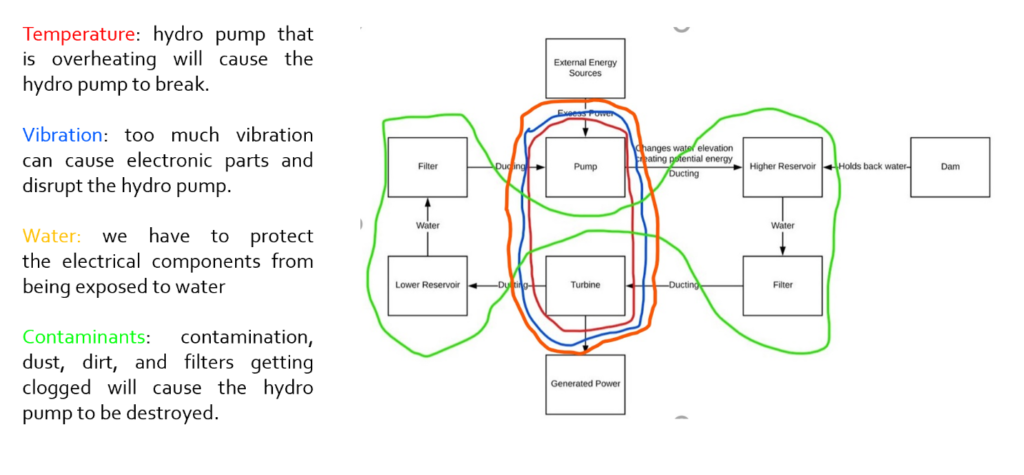Basic Idea
Our team “The Entire Systems Design Class” wanted to tackle a significant problem that the energy industry faces both in sustainable and non-sustainable energy production. Pumped hydro-storage (PHS) is a great solution for balancing out the peaks and valleys in power production throughout the day. This is especially a large problem if solar and wind energy production is your main source of energy, but also can reduce overall energy production of coal, natural gas, and nuclear energy. This gives cities the ability to store energy when demand is less than production, and then supplying this stored up energy during the peak times of the day. This would allow more sustainable energy production like solar and wind to take a bigger overall role as energy producers, because of PHS’s ability to balance out the how inconsistent solar and wind is as energy producers.
Key Components
Pumped hydro storage has several key components that are necessary for the system to operate. To generate the potential energy required for the energy storage there needs to be two reservoirs at different heights. These reservoirs can be natural lakes at different elevations, or man-made tanks. The system may also require a dam to hold the water back so that the potential energy is not lost due to rivers allowing the pumped water to escape. Ductwork is a necessary component for PHS to work because it allows the fluid to be directed from the lower reservoir back into the higher reservoir in controlled environment. The pump/turbine is the heart of PHS, without this component you cannot use the excess energy created from outside sources to pump the water to the higher reservoir and then use the turbine to generate useful energy.


- Power Wasted

- Power Stored
- Used Stored Power
Summary Subsystem Testing Results
|
Stakeholder
|
Stake
|
Lifecycle Phase
|
|---|---|---|
|
Government
|
Expenses
|
Conception, installations, operations and maintenance retirement and disposal
|
|
Public
|
Benefit from energy balancing, and stability during peak time
|
Operations
|
|
Engineers
|
Involved in designing the project
|
Design development, Fabrication, testing
|
|
Construction workers
|
Building and maintaining the project
|
Fabrication, installation, maintenance
|
|
Material suppliers
|
More materials being used for this project
|
Fabrication
|
Block Diagram of PHS System

Topological Boundaries of the system

